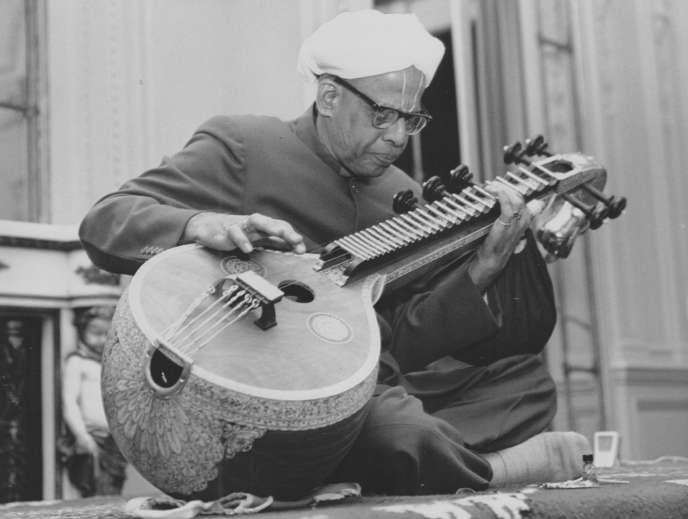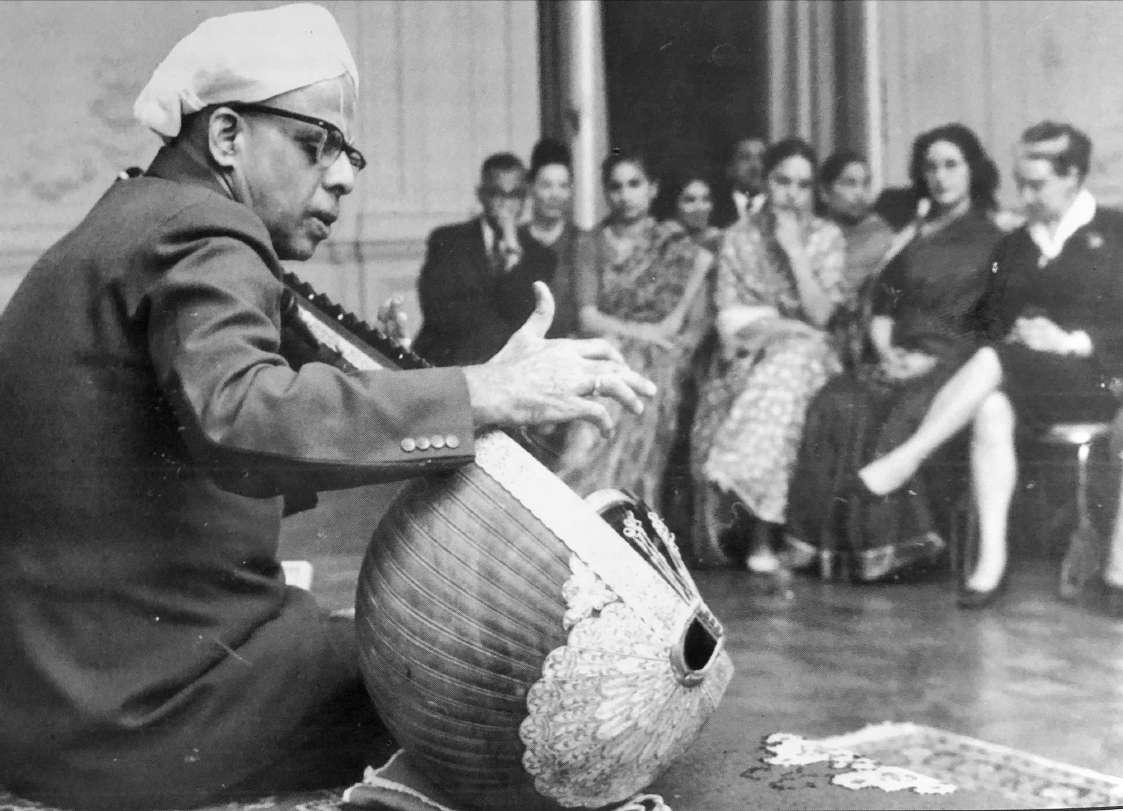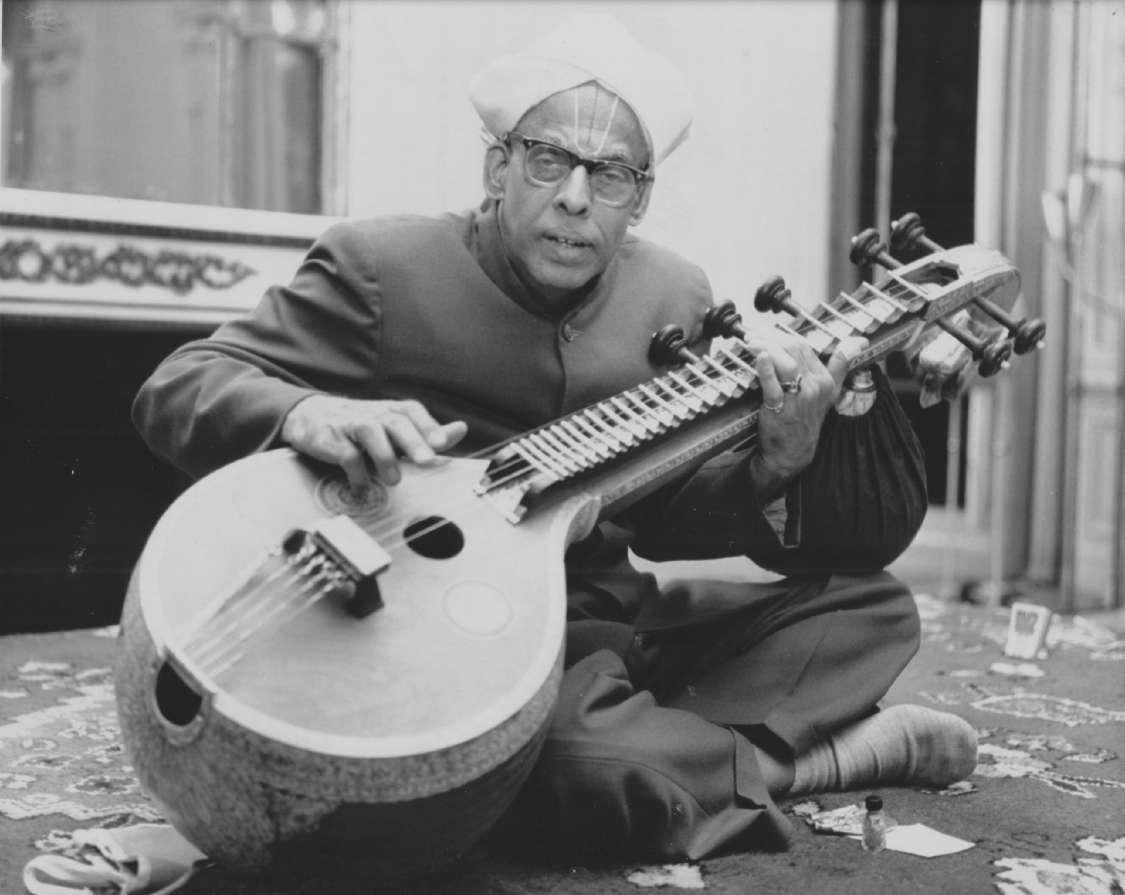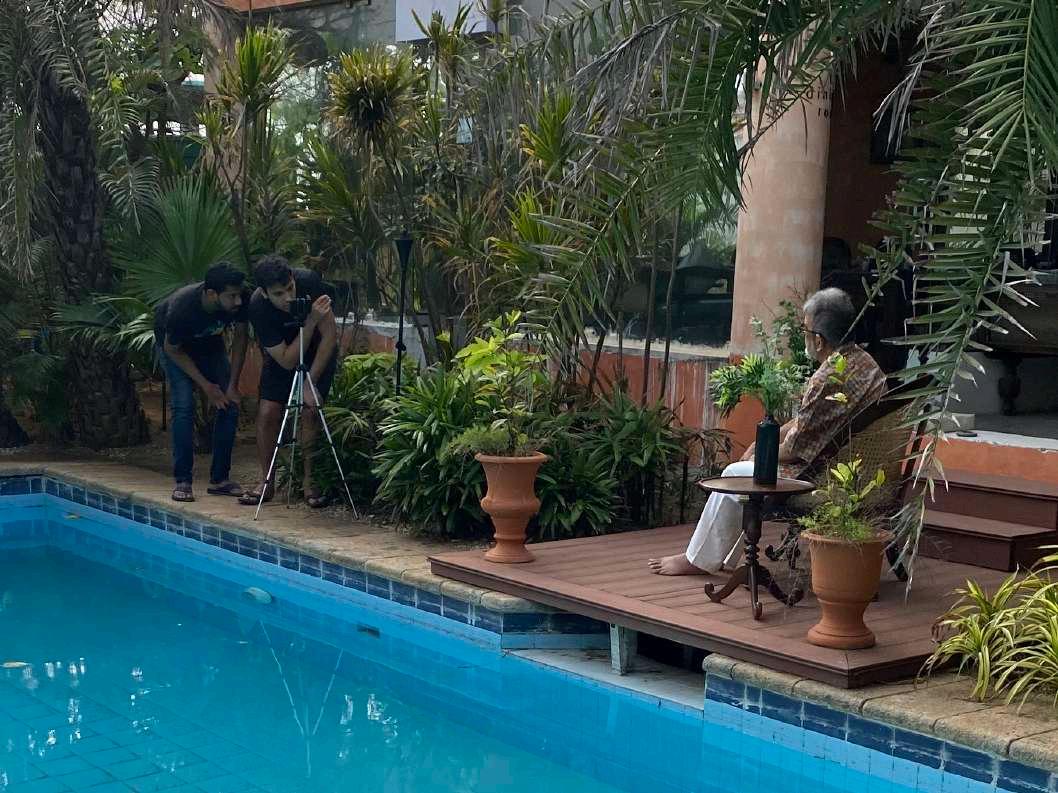
7 minute read
Rangaramanuja Ayyangar, Another Ekalavya
from Vaak Issue 03 2021
Dr. KG Vijayakrishnan
If one mentions the name of Rangaramanuja Ayyangar to many of the senior musicians or rasikas, the first reaction one would notice, if not in public by the more circumspect individuals, in private most probably, is a smug, sneer accompanied by the statement, “oh, to him only Dhanammal’s was music; nothing else mattered”. But this is far from the truth. One just has to look at the list of musicians he was instrumental in having their debuts in Madras in the Sabha he was associated with, namely, Jagannada Bhakta Sabha, then people will realise that Rangaramanuja Ayyangar did have a truly open mind.
Advertisement
He realised the value of the compositions of Purandara Dasa and helped Lalithangi and her daughter Vasantha Kumari in notating them. Similarly, he recognised the greatness of Papanasam Sivan as a composer and helped him bring out the first hundred kritis.

Imagine, a young man with his new wife, who had just migrated to Madras from Mannargudi, who was making a living as a school teacher, who was battling problems in his personal life with the loss of many infants in quick succession being possessed by the magic of Dhanammal's music. It showed him a view of heaven but his thick fingers refused to obey his commands. And he was also a mute witness to many sycophants who would pretend to love Dhanammal's music, pick up pieces from her and then go on to present them shoddily in concert platforms.
When he started teaching the precious legacy he had taken pains to acquire and pass on to the next generation, to my aunts, my mother and some of her contemporaries from the thirties to the fifties. He was a meticulous teacher who would patiently wait for his student to get all the details right before proceeding to the next step. But by the sixties, he was clearly a man in a hurry. He was obsessed with the passage of time and was desperate to pass on the legacy to the coming generations in as short a span of time as possible. So when it came to teaching my cousin (who had started along with me when we were in Chennai), and others (from hearsay), he would teach the pallavi and the anupallavi on the same day and demand that the student learn the charanam on their own and play the entire song, without looking at the book, in the next session. This was an impossibly tall order. The only student who could openly argue with him about his unreasonable demand was me when I used to go him when he visited Chennai occasionally saying, “I have my college to atttend to as well and this is just not possible.” He was taken aback at this open rebellion saying, with a wry smile, “You are as hot headed as your mother.” But he did teach me three gems, patiently, ‘Pahimam ratnachala’/Mukhari, ‘Arunachalanatham’/Saranga and ‘Nirupamanasami’/Behag, repeating each line till I got the details right. His singing of these pieces is still fresh in my memory.

Everyone who had even a passing acquaintance with Rangaramanuja Ayyangar knew that the corner stone of his struggle with Dhanammal's music was his precious jottings which he undertook, either as he was listening to her, or immediately after the session was over, sitting under the street lamp. He was also aware that this was a topic of general merriment, inviting derogatory comments from all those who attended the sessions.
Since those precious notes are lost to the world, let us take a step back to consider what the notes would have looked like. Keeping in mind the facts that:
a) he was already exposed to a lot of good music since his childhood,
b) he had a photographic memory where he had stored a staggering amount of data which were ready for recall at a moment's notice and
c) his one and only aim in making notes of Dhanammal's playing was to capture the essence of her music, her inimitable left hand technique and her style, her subtle innovations improving often heard Paatantara, apart from the surprises in her stock repertoire

We can hazard a guess as to how he could have gone about the enterprise as I imagine it now. Knowing that her left hand technique was unique, he must have initially concentrated on pieces he already knew well to note down not only the minute differences but also the way she assayed even the familiar music, painstakingly noting down her fingering patterns which resulted in different musical phrasing, musical gamakas. He must have thus painstakingly developed his notational system, step by baby step. Only after this stage of noting was more or less satisfactorily revealed to him, he would have taken the next step which was to acquire new pieces which he was not familiar with. We do not know what he rendered for that AIR programme which the old lady took great pains to attend. By all accounts we know that it impressed her and, I am certain, because he must have included some pieces exclusive to her repertoire. Just imagine, in a matter of maybe, less than two years, just look at the Javalis and Padams which are, universally claimed to be Dhanamaal's exclusively, he had picked, for which certainly we have documentary evidence in Sri Kriti Mani Malai part IV, and we have a recording of the Padam in raga Devagandhari, which by the way he has notated in the raga Begada in the book. It is clear that what he has passed on to the world is not all the wealth he gleaned from her Friday sessions and the Wednesday sessions in the last two years of her life.

Rangaramanuja Ayyangar with his daughter Padma Vardhan
He had discovered this technique when he was past his youth. And his fingers being thick set, he had an extremely tough time learning this technique. The technique looks simple but it is difficult as it requires dexterity in both the left forefinger and middle finger as independent entities. Having taken so much pains to learn it, he was disappointed when his students tried to cut corners or take the easy way out. Above all, the last word in musical taste to him was his revered Dhanammal and if a student dared to make independent choices, which according to him didn't go with this her style, he could get very caustic. He had heard reports of my concert for the T Nagar Arts Academy in the early seventies, and he wrote a strongly worded letter expressing his disappointment in no uncertain terms. But I am glad when I performed at the Music Academy in 1975, he and Mami flew all the way from Bombay, and he was quite happy with my playing, and he blessed me.
Rangaramanuja Ayyangar: Another Ekalavya
Vaak’s first documentary, directed and produced by Shreeraam Shankar, is on the life of the musician and scholar Rangaramanuja Ayyangar. This year also marks Ayyangar’s 120th birth anniversary and we are grateful for the opportunity to document his life and music. Special thanks to Dr. KG Vijayakrishnan, Sriram Venkatakrishnan, Aruna Sairam, Anil Srinivasan, Aishwarya Vidhya Raghunath & Ashwath Naroth for making this documentary happen for us.
Production: Vaak
Concept, Direction & Editing: Shreeraam Shankar
Coordination: Arvind Kumar Sankar
Naration: Dr. K G Vijayakrishnan
Script & Screenplay: Lashman Premi
Music: Kshitija Varadan & Vipanci Trust
Location: Asvah 24

- K. G. Vijayakrishnan, the youngest son of Shrimati Karpagavalli and Shri Gopalakrishnan, learnt veena from his mother who was a student of the eminent musicologist Ranga Ramanuja Ayengar. He began his career as a lecturer in English Literature in Madurai and continued his highHer studies at CIEFL, currently named the English and Foreign Languages University doing his PHD in phonology and retired from its faculty as 'Senior Professor' in 2017.He had continued to cultivate his music as a non-professional passion performing in India as well as abroad. The highlight of his academic endeavour was the publication of his book "the Grammar of Carnatic Music", Mouton de Gruyter, Germany which allowed him to combine his twin passions of 'the science of sound' , phonology and music. E devotes his time solely to music trying to propagate the hard earned legacy of the legendary Veena Dhanammal's style of music.

Rangaramanuja Ayyangar with Veena Dhanammal










